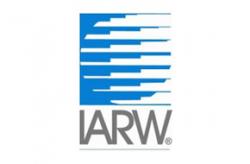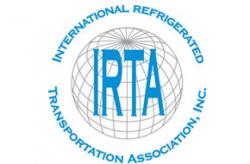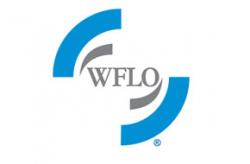State of the ports
COVID, containers, congestion, catastrophes – what’s next? More demand!
COVID-19 created the perfect storm. The pandemic caused supply chain disruptions in ways unimagined: equipment imbalance, port congestion, ill staff at seaports and terminals, and capacity restraints across all transportation modes.
Add to this severe winter weather on the United States East Coast and Texas, tornadoes and flooding in the U.S. Midwest, and a mammoth containership grounded on a sandbar blocking the world’s busiest trading route – the Suez Canal.
Meanwhile, consumers increased their internet purchasing to what is being called the biggest shift in spending behavior since the 1970s. In-home cooking exploded along with demand for prepared foods and meal kits. Warehouses across all industries are trying to restock, yet schedule reliability for ocean shipping remains unstable and weighs heavily on available capacity. United States inland networks, including warehousing, truck and rail, are being tested like never before.
California Chaos
Vessel queues and wait times, especially at the Ports of Los Angeles and Long Beach in California, remain significant with some vessels waiting to berth for more than 30 days. Compounding this was the impact of China’s cancellation of intercountry travel for its Chinese New Year. This meant factories kept in production continued pumping out goods. “Usually, it’s a time when Asian business closes for three weeks, steamship lines divert sailings, and there are fewer arrivals on the U.S. West Coast,” says Jason Dreisbach, President, Dreisbach Enterprises. Instead, imports surged, and containers needed for export became in short supply. By mid-February, the Port of Los Angeles reported some 62 vessels, including 20 containers ships, were anchored awaiting berth space. Container and street dwell times were double the pre-import surge. While the Port of Oakland primarily handles exports, it too experienced a record number of vessels in its “parking lot” in midMarch. “Some 14 in the bay and six outside the Golden Gate Bridge,” says Dreisbach. Compounding the problem, in January some 700 dockworkers reportedly contracted COVID and hundreds of others took time off for pandemic-related reasons, leaving both Los Angeles and Long Beach ports severely shorthanded. To prevent a similar fate, Konoike-Pacific California – a cold storage, port/drayage, transportation and handling company with operations four miles from the ports, added an additional 10 percent of workers to ensure an adequate labor force. “We created our own herd immunity here,” says President and COO Rich Burke.
“Not doing the same killed the terminals.” Meanwhile, the Port of Oakland in Northern California worked with the Pacific Maritime Association (PMA) to hire multiple new workers and add extra shifts where possible. The result: the port has shorter dwell times. “Where typically a container would be at berth for three days, they are trying to turn the container in two days to get vessels in and out,” Dreisbach says. Consequently, however, Lineage Cool Port Oakland, which Dreisbach Enterprises operates with Lineage Logistics, has less time to turn export products. “That creates its own set of challenges,” Dreisbach admits. But even in 2019 and before, the supply chain faced challenges for issues like labor shortages, reefer container and truck chassis availability and port gate hours of operation and cut-off times. “Each year, we see increases in import and export container shipping volumes due to factors like globalization, year-round demand of certain products and specialization of production,” comments JD Schwefler, Vice President of Business Development, North America, Americold. “We expect these trends will continue.”
Additional Impact
Importers are also feeling the crunch. Dreisbach sees fresh product that would normally go to Los Angeles and Long Beach being diverted to Oakland where dwell times are shorter. “Shippers are trying to keep some of their shelf life,” he says. For example, shipments of lamb ordered for the Easter holidays were especially compromised with some customers not receiving their orders. “The lamb,” Dreisbach explains, “comes from Australia and New Zealand and typically arrives at the Port of Oakland where most is transported to Los Angeles by feeder vessel.” But given unreliable arrival days, vessels keep missing the feeders. Demand surges are also creating bottlenecks at inland terminals and with modes of inland transport. Demand has spiked for trucking capacity as grocers and retailers look to restock shelves and communities demand shipments of the highly coveted COVID-19 vaccine. Not surprising, trucking rates have surged.
“Meanwhile, the movement from just-intime inventory management to a safety stock arrangement has caused an uptick in storage needs by customers,” reports Andy Janson, President, MTC Logistics. “The present import-heavy cargo movements are causing congestion at major ports, slowing cargo movement to international refrigerated distribution centers. This, in turn, slows delivery to retailer DCs, causing reduced product inventory in stores.” There is also a shortage of reefers, which some executives say is the result of a strategy in China.
“Imported reefers to China are backlogged at Chinese ports due to examinations being placed on frozen and refrigerated foods under the disguise of a potential COVID-19 virus on frozen foods,” Janson says. Consequently, some ocean carriers are refusing to take U.S. frozen export bookings for fear of containers being detained at Chinese ports. Others are transporting empty containers to China to protect the strong outbound demand for Chinese produced goods. Dreisbach notes that the Port of Oakland is holding on regarding refrigerated container shortages. “We’ve seen some tightening of availability on specific steamship lines, but we are faring better than the Midwest and the intermodal side where they are being transited inland to Chicago and Kansas City,” he says. “But that is also pushing more product to the West Coast to access those containers”
Some Relief
The demand for goods is expected to continue throughout 2021, stimulated by the disbursement of additional stimulus checks to citizens in the United States. Industry experts project steamship rates to somewhat normalize Q3 2021, but rise again in Q4.
While port congestion should improve this summer, Burke maintains the congestion and container shortages will probably get worse again in late fall when shippers face the surge of imports ordered for the holiday peak season. Meanwhile, changes in steamship line rotations are currently on hold while carrier executives are trying to make asset adjustments to address supply chain dynamics and issues caused by the Suez Canal blockage. Most steamship lines are now employing entire fleets to move shipments and reposition empty containers. “Vessels that were considering altering ports or routes have stayed in their scheduled port calls,” says Frank Plant, President, Harborside Refrigerated, which operates frozen, refrigerated and dry warehouse space in San Diego, California. He notes the Port of San Diego has experienced some disruptions due to COVID-19, but no congestion, because it primarily services South and Central America. Plant adds that his company has adequate capacity to accommodate growing perishable imports.
“I believe we currently handle shipments faster than most ports. The emphasis we are seeing is on paperless transactions and truck turnaround. Reduced road traffic has made scheduling trucks more reliable.” Port improvements also help with efficiencies. The Port of Oakland, for example, just installed three new cranes – the tallest in North America. “Those cranes are going to help us deal with larger vessels more effectively,” says Dreisbach. In addition, the Port of Oakland will be the first port call on container transportation and shipping company CMA CGM’s new service from Asia. “This will give us better container availability, especially on reefers from Asia for our export products,” Dreisbach says. “We are scaling our fleet of drivers and tractors to meet the export demand.”
Increased Volumes
Other seaports around the United States also are seeing increases in container volumes. But congestion is not a problem at U.S. East Coast and Gulf ports, although some congestion is occurring. At the Port of Baltimore in Maryland, volumes have rebounded since last year predominately due to a shift in cargo from the U.S. West Coast to U.S. East Coast. MTC Logistics operates a warehouse facility close to the Port of Baltimore. MTC Logistics also operates an international temperature-controlled distribution center at the Port of Mobile in Alabama, also an export port. Janson says that MTC is looking to automate wherever possible, expand operations and partner with terminal operators and ocean carriers to drive efficiencies. He maintains that continued shifting of cargo by Beneficial Cargo Owners (BCOs) to U.S. Gulf and East Coast ports will relieve congestion for West Coast ports. He adds, “Building international refrigerated DCs closer to ports reduces turn times for port-centric truckers.” As a result of expansion and acquisition activity over the past few years, Americold now operates an extensive network of portside facilities around the world.
“By working closely with our customers to identify market demand, we have increased needed capacity near ports,” Schwefler says. For example, in 2020 Americold opened a new export and import facility at the Port of Savannah, Georgia. Americold also has capabilities to help the import and export community work through challenges to get product flowing through ports. “Some of these solutions include diversion of product to alternative ports, employing rail or intermodal activity to manage costs during overflow periods, holding or forward deploying products at inland facilities or offering value-added product transformation for customers to repurpose inventory to alternative channels,” Schwefler says. Overall, the future looks bright for temperature-controlled sea transportation of food products and for portside temperaturecontrolled warehouses.
“This will only continue to grow as the buying public realizes that frozen cargo stores well and without product degradation,” Janson says. “Also, as BCOs continue to increase product sourcing from offshore suppliers, economical sea transport makes sense.” Other ports, such as the Port of Wilmington, North Carolina, also offer alternatives to cold chain shippers. “There is more than enough temperaturecontrolled space in North Carolina, particularly in the eastern part of the state, which includes the port,” reports Chuck McCarthy, President, Port of Wilmington Cold Storage (PWCS). “And the North Carolina Ports Authority (NCPA) has long-term plans to grow its refrigerated/frozen goods sector. This includes attracting additional steam lines, additional ports-of-call and infrastructure improvements,” he says. “We are the only cold storage facility at the port and are part of NCPA’s long term strategy.”
KAREN E. THUERMER is a freelance writer based in Alexandria, Virginia, who specializes in economic and logistics issues.
EMAIL: kthuermer@aol.com
Source: Cold Facts May/June 2021 issue



